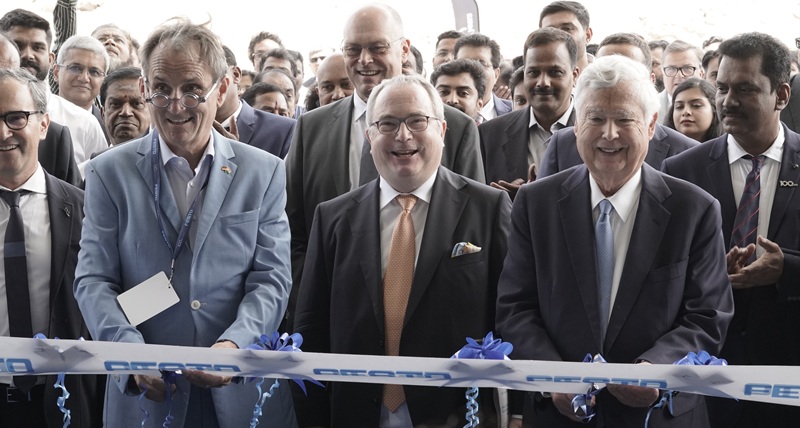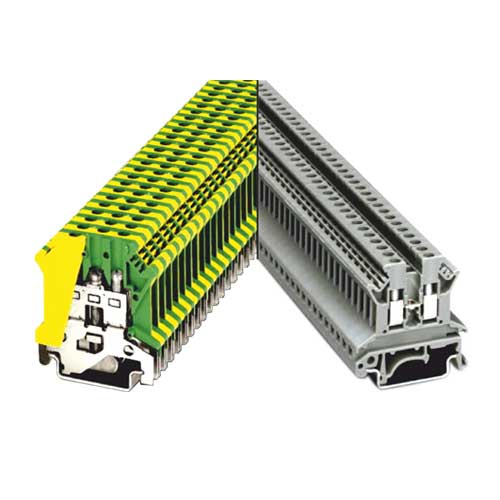Schedule a Call Back
What’s the ‘current’ status in Electronics?
 Articles
Articles- Jul 29,23

The digital evolution is bringing in a technology driven platter to world and electronics is leading that way. The global electrical and electronics (E&E) market grew from $3454.94 billion in 2022 to $3739.37 billion in 2023 at a compound annual growth rate (CAGR) of 8.2 per cent as reported by The Business Research Company. India has significant role in this growth and with the announcement of the country becoming the second largest mobile producers in the world, the global manufacturers are looking at India as a growing electronics manufacturing hub. Electronic exports have become the 6th largest export commodity group as per the government estimates by March 2023. According to the data compiled by Indian Electrical and Electronics Manufacturers’ Association (IEEMA), electrical equipment industry’s exports touched Rs 94,169 crore in FY 2022-23 registering growth of 3.07 times in past 9 years. Major exports products included rotating machines, power electronics, switchgear and panels, transformers, cable, and TLT whereas the USA, UAE, Germany, UK, and Bangladesh were the major contributing export countries. The sturdy export increase signifies the positive growth of Indian electrical industry.
Overall the electrical and industrial electronics industry has witnessed a growth of 13 per cent in 2022-23. Pushan Sharma, Director – Research, CRISIL Market Intelligence and Analytics shares, “The electronics industry in India is experiencing robust growth, finding widespread use in various sectors of the economy. Based on estimates, India's global electronics manufacturing share has increased significantly, rising from 1.3 per cent in FY12 to 3.75 per cent in FY22.” In 2022, industrial electronics accounted to 16 per cent and electronic components to 13 per cent of the total electronics manufacturing in India. With all these developments in the E&E industry, the current drift in India is towards the semiconductors. The usage of electronic devices is increasing in both the consumer and the industrial market, and these semiconductors serve as the foundation for electrical connectivity in these electronic devices. Let’s explore the more on this growing sector of the electronics.
The Semiconductor drift
In the beginning of 2023, the Semiconductor Industry Association in the US and India Electronics Semiconductor Association (IESA) jointly assessed the readiness of the industry opportunities and strategic development in the semiconductor ecosystems. The report revealed that India brings significant strengths to the semiconductor manufacturing ecosystem. India is planning to expand its global market share in three semiconductor production processes that are design, fabrication, and assembly, test, and packaging (ATP). According to Ministry of Electronics & IT (MeitY), Indian semiconductor market stands at $10-20 billion in 2021 and is estimated to reach $55-65 billion by 2026 which will help India to increase its global market share from 3 per cent to approximately 8 per cent by 2026.
Source: ICRA
Indian government and policymakers are also initiating many policies and investment to attracting semiconductor manufacturing. State government such as Gujarat, Karnataka, Tamil Nadu, Telangana are looking to set up semiconductor and related industry clusters. Recently on July 28, 2023, Prime Minister of India Narendra Modi inaugurated second edition of SemiconIndia 2023 with the aim to make India a global hub for semiconductor design, manufacturing and technology development. “As India moves forward on the path of reform, new opportunities will be created. India is becoming an excellent conductor for semiconductor investments,” said PM at the event.
The Union Cabinet granted its approval for a comprehensive program focused on the development of the semiconductors and display manufacturing ecosystem and was allotted a substantial budget of Rs 76,000 crore. In 2022, the Cabinet reviewed and updated the program to further align it with the evolving needs and advancements in the electronics industry. It includes the following fiscal incentives:
While talking about the upcoming developments and growing market, it is necessary to assess the past so as to make future steps efficient. The semiconductor policies and schemes are growing and yet to make the grades. But the government of India launched Production Linked Incentive (PLI) scheme and for electronic/technology products. Let’s assess the how successful PLI and other schemes have been for E&E industry.
The Atmanirbhar route
In the past few years government has launched schemes such as National Policy on Electronics, 2019 (NPE), PLI for large scale electronics manufacturing, PLI for IT hardware, Electronics Development Fund (EDF) and Phased Manufacturing Programme (PMP). As opined by some industry experts, and companies and association heads, the schemes has turned good investments and revenues for them in a direct or indirect manner. As of March 2023, the PLI scheme for large scale electronics manufacturing has attracted investment of Rs 5,998 crore and led to a total production of Rs 2,76,903 crore, including exports of Rs 1,28,886 crore. The scheme has also generated employment of 58,276. “16 applications have been approved in the first round under the PLI for large scale electronics manufacturing and 16 companies have been approved under the second round,” tells Rajoo Goel, Secretary General, Electronic Industries Association of India (ELCINA).
Figure 1: Production & export trends
Source: Directorate General of Commercial Intelligence and Statistics (DGCI&S)
Indian companies who didn’t directly participated in the PLI scheme also benefited from its application. “By serving customers who are part of the PLI Scheme, we have gained exposure to cutting- edge technologies and industry best practices. We have been able to optimise production efficiency, reduce manufacturing cycle times, and ensure superior product quality,” says Sajan Pulikottil David, Business Head, Amara Raja Electronics.
“In addition to boosting domestic manufacturing, the PLI Scheme has also facilitated job creation, skills development, and technology transfer within the country,” opines Benjamin Lin, President, Delta Electronics India. “Furthermore, these government schemes have helped us strengthen our position in the global market by incentivising exports.” With the increase in exports, the imports of electronic goods have also decreased; this can be seen as a result to the increasing electronics manufacturing in India. “The Indian electronics industry has witnessed a steady decline in the overall import of electronics goods over the years. Currently, imports in the industry account for approximately 10.5 per cent of the country's total imports compared to approximately 14 per cent in FY21,” tells Sharma.
Indian MSMEs whereas were not satisfied with the growth momentum with PLI Schemes as it lacked the suitability for them. “Currently, there is no scheme in India which is supporting the existing MSMEs for growth and exports. I suggest, before any scheme is announced for MSMEs, the concerned people within the industry should be discussed and seek suggestions on what is working and what is not. MSMEs should be supported without any conditions,” says Anil Kumar Muniswamy, Founding Managing Director, SLN Technologies.
The way ahead
Volume 2 of the Vision Document for the electronics sector released by MeitY shared the aim to manufacture $300 billion electronic products by 2026. The key products that are expected to lead India’s growth in electronics manufacturing include mobile phones, IT hardware (laptops, tablets), consumer electronics (TV and audio), industrial electronics, auto electronics, electronic components, LED lighting, strategic electronics, PCBA, wearables and hearables, and telecom equipment (refer Table 1). The domestic market is expected to increase from $65 billion to $180 billion over the next five years and the aim is to make electronics amongst India’s 2-3 top ranking exports by 2026. With this India’s mind-set is clear on products and services to focus on.
Table 1: Growth envisioned in MeitY’s Vision Document (Volume 2)
Source: Vision Document-Volume 2 "$300 Bn Sustainable Electronics Manufacturing & Export by 2026"
With this there are some developments happening within the industry to facilitate the growth of manufacturer. The following list consists of a few such opportunities:
India is a growing economy and this transition phase taking it through a lot of ups and down. But the encouraging part of India’s development is the collaborative efforts made by everyone including federal government, large companies, MSMEs, SMEs, associations and the customers. Country as a whole is looking to support the Atmanirbhar initiative and is looking forward to suitable developments in their respective fields. The growing electronics market is going to lead this success and mark Indian electronics industry on the global map.
Source: 2nd Volume of Vision Document on Electronics Manufacturing
Related Stories

BluPine Energy Secures Rs 24.16 bn Funding for 150 MW FDRE project in Karnataka
BluPine Energy has secured the fund for a 150 MW Firm and Dispatchable Renewable Energy (FDRE) project in Aland, Karnataka, reinforcing its leadership in clean energy.
Read more
Can Academia-Industry Ties Power India’s Manufacturing?
India's industrial sector has exhibited tremendous resilience and appetite for growth. However, the academia-industry collaboration will be crucial for India to become a worldwide manufacturing powe..
Read more
Germany's Festo opens Rs 5 bn facility in Hosur, reinforces India commitment
The manufacturing facility, which will concentrate on the production of advanced pneumatic automation components, aims to cater to both domestic and global markets by delivering high-precision autom..
Read moreRelated Products

Geared Electric Motors
Delco Fans Pvt Ltd offers single phase capacitor run and three
phase geared Instrument motors, totally enclosed face/foot mounted.

“Kusam-Keco” Partial Discharge Acoustic Imager - Model - Km-pdai
‘Kusam-Meco’ has introduced a new “Partial Discharge Acoustic Imager Model KM-PDAI.

78 Series Din Rail Terminal Blocks
Werner Electric Private Limited offers a wide range of 78 series din rail terminal blocks.

















